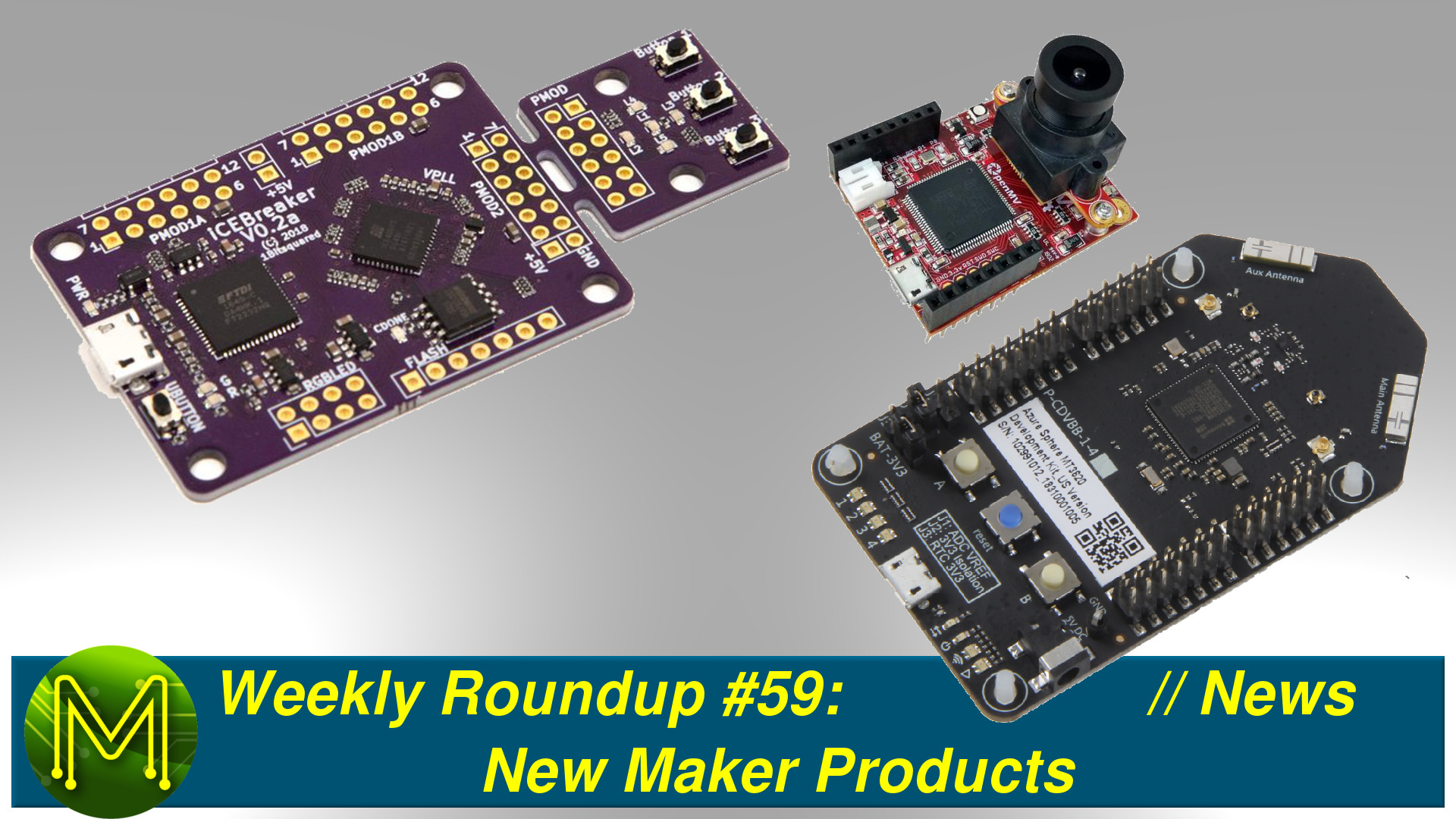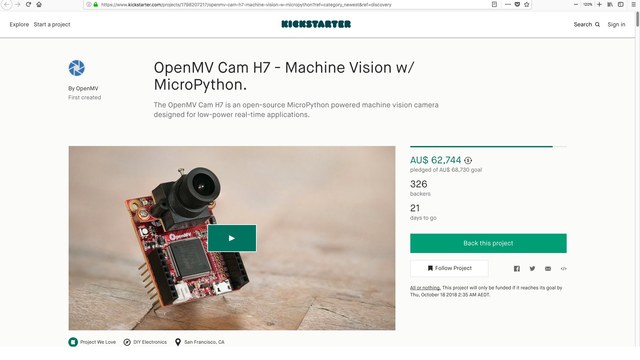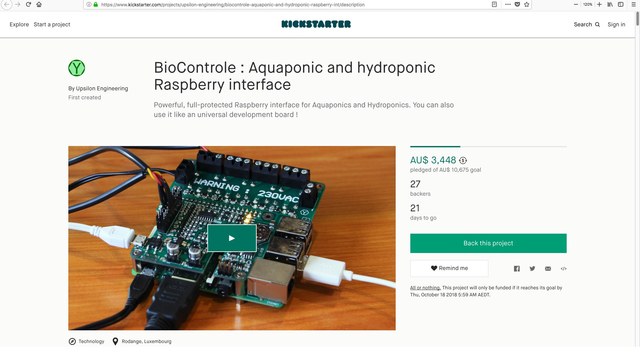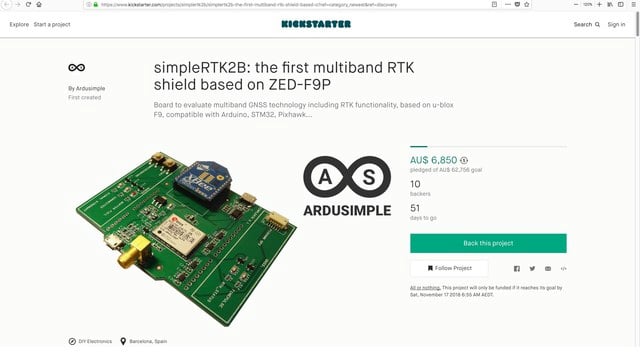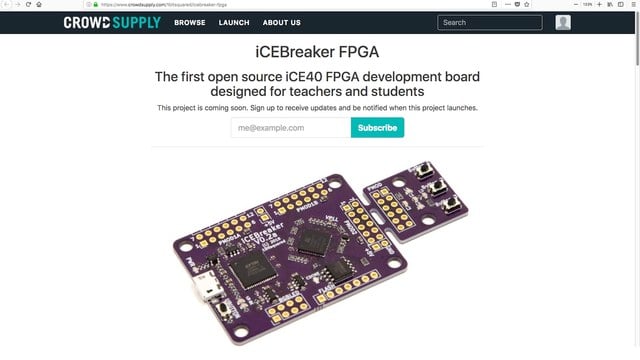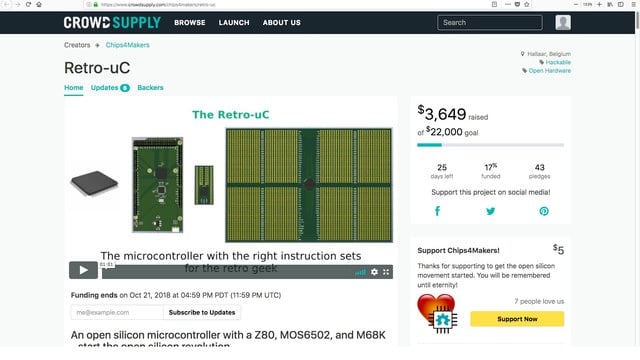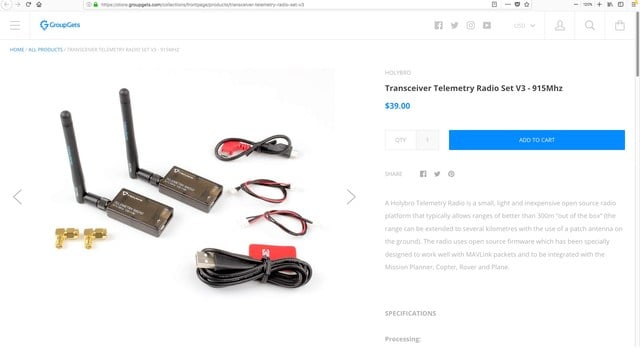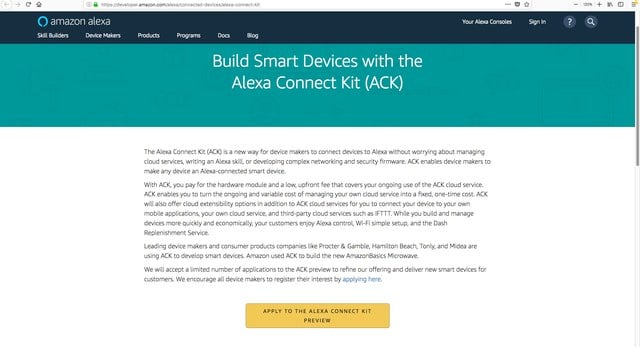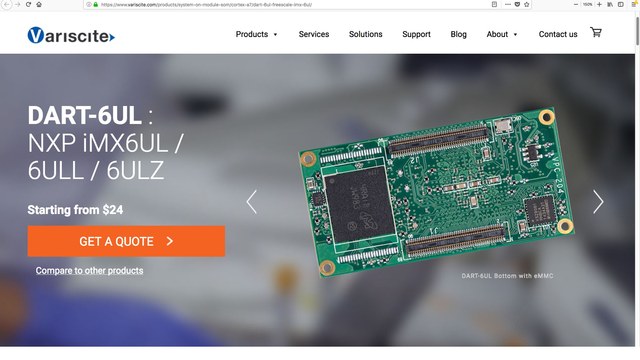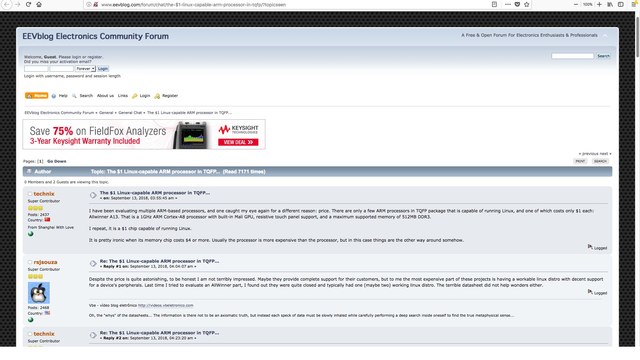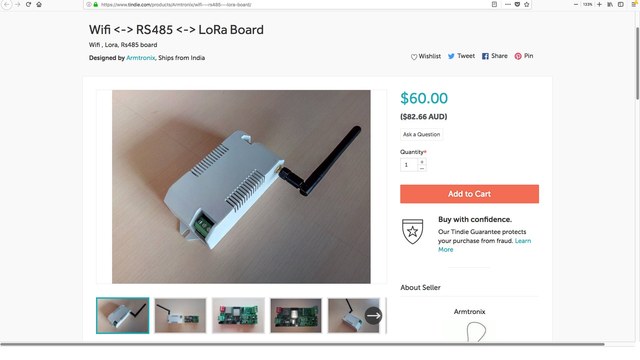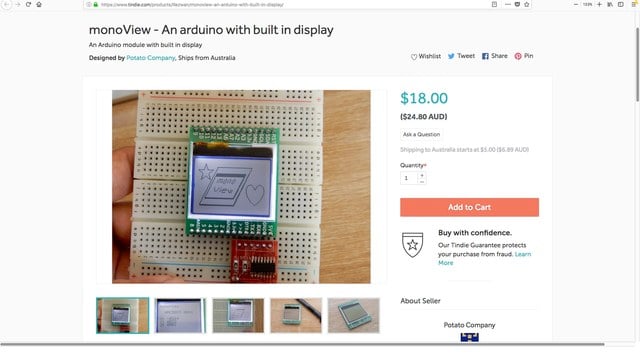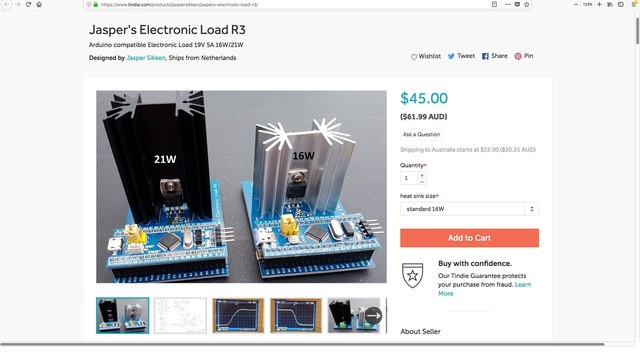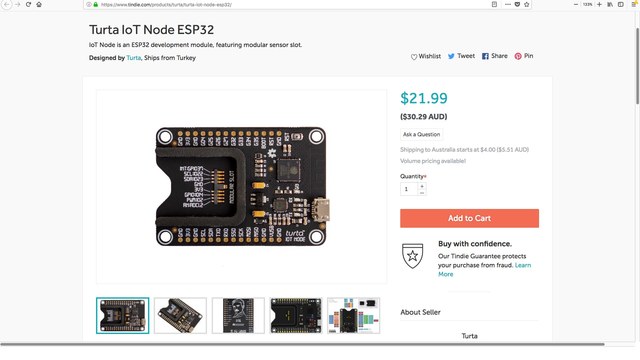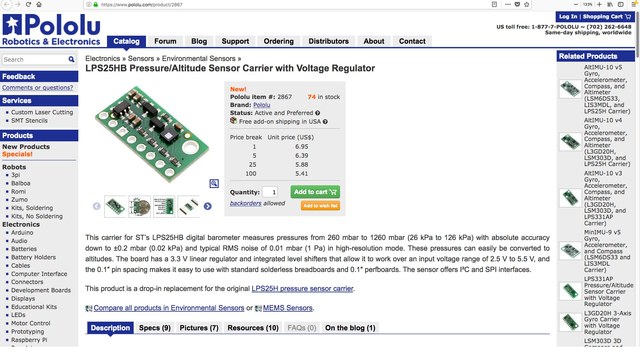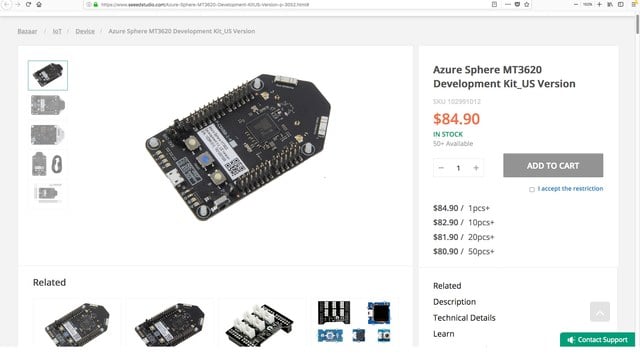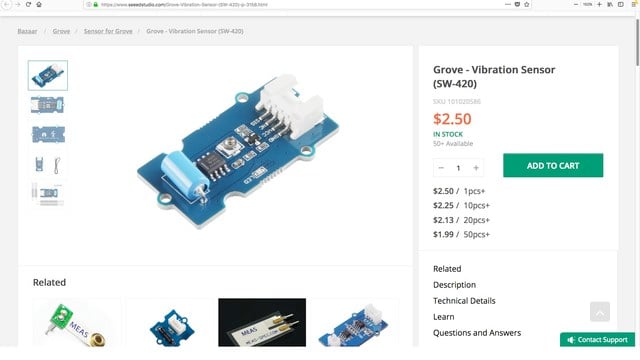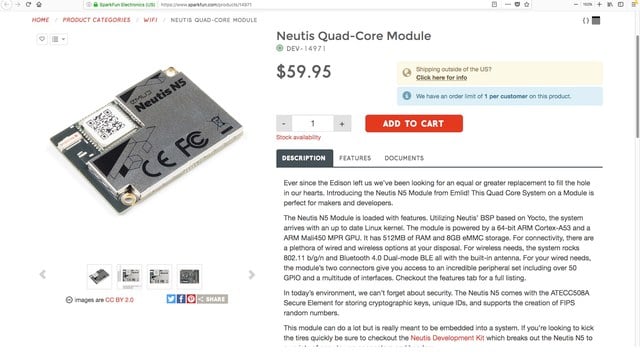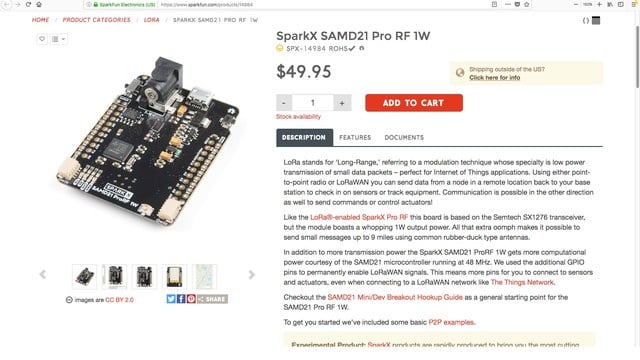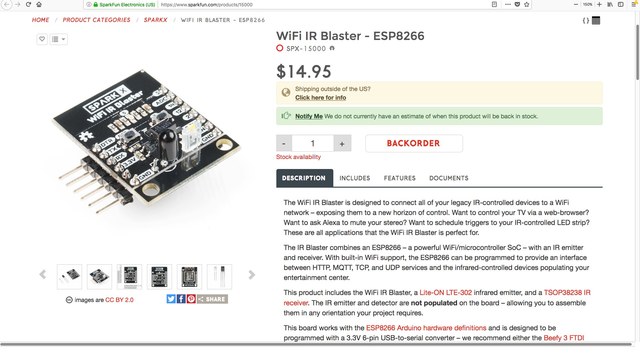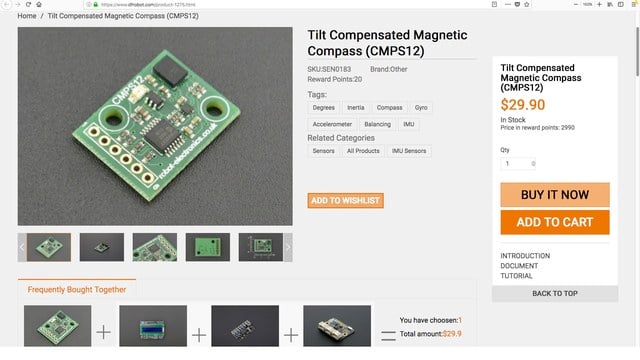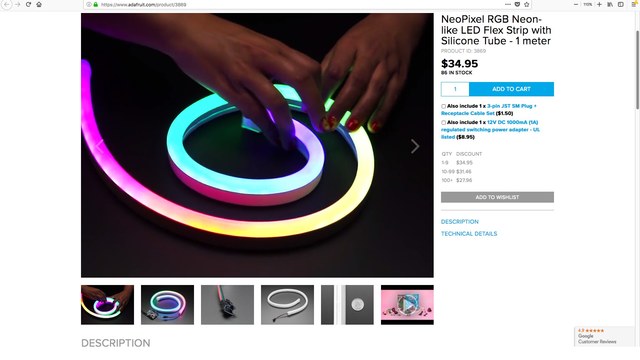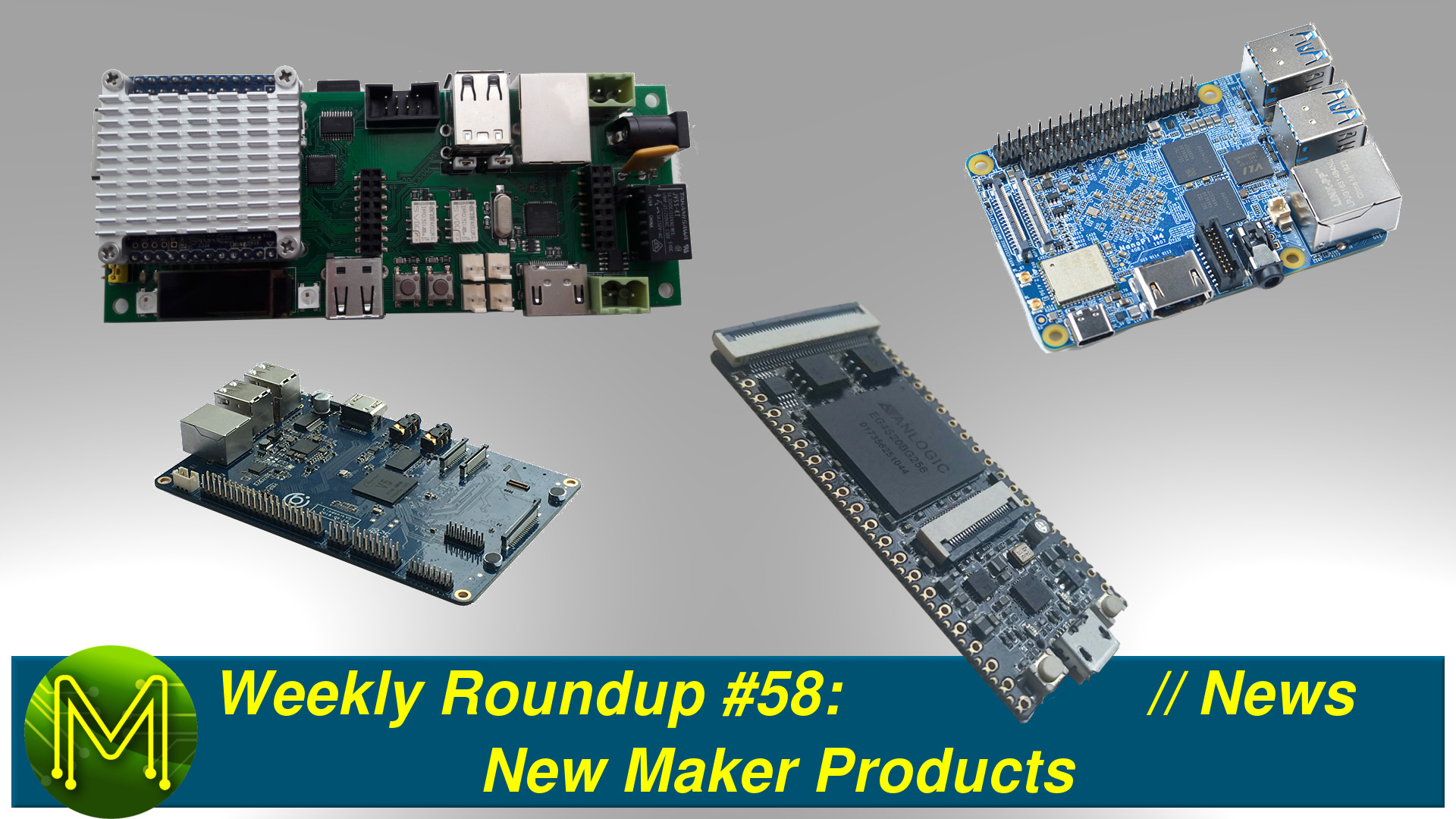Weekly Roundup #59: New Maker Products // News
This Week’s Weekly Roundup of New Maker Products is pretty quiet. Combined with two back-to-back holidays in China and the great MLC shortage of 2018, I’m not surprised.
Crowd Funding
KickStarter
OpenMV Cam H7
First up on Kickstarter we have the OpenMV guys back on Kickstarter, this time with an upgrade on their CAM M7. The new model, tagged the CAM H7, has an STM32H7, which I mentioned back in Weekly Roundup #58. Not only does this provide twice the horsepower, but the board has removable camera modules allowing you to use not only a standard camera, but also thermal and global shutter cameras.Capable of tracking up to 16 colors, facial detection and a bunch of other things like QR and barcode scanning. The FPS specs look pretty impressive too, supporting 400FPS using a FLiR module.
The board pushes all the usual GPIO suspects with an SPI and SD bus capable of 100Mbps all powered from either 5v microUSB or LiPo battery. You can pick up the basic kit for only US$49. Wish I hadn’t blown my budget for this month.
BioControle
If you’re in to growing plants of any kind, then here’s a new Pi hat for hydroponics and aquaponics. Has all the stuff you need with inputs for temperature and humidity sensors, 4 GPIOs, RTC, 2 servo outputs and 4 relay outputs. It’s a little expensive at 76 euro, but has everything you need to get up and running, minus the Pi and sensors, of course.simpleRTK2B
If you’re in to precision GPS location, then you would have heard about RTK. RTK allows you to greatly enhance GPS precision by measuring phase changes in GPS signals along with a reference station. RTK is normally pretty expensive, however, this campaign brings RTK to the home hobbyist. For 56 euro you get an Arduino shield with Xbee header and u-blox ZED-F9P module giving you 30mm accuracy.That’s pretty cool, but note that you will need to buy at least two of these since one acts as a reference station and the other as the roaming device.
Crowd Supply
LimeNET Micro
Over at Crowd Supply there’s a new SDR in pre-launch from LimeNet called the LimeNet Micro. This is a board based on the Raspberry Pi Compute Module that provides full SDR capabilities.Running the Lime Microsystems LMS7002M RF transceiver, which is capable of 10MHz to 3.8GHz, it also contains an Intel 10M16 FPGA for glue logic, and is powered from 12v DC jack or PoE. This is the sort of board that will allow you to do a lot of RF hacking.
iCEBreaker FPGA
If you’re a follower of the 1bit squared guys, then you’ll know about the iCEBreaker FPGA board which is in pre-launch on Crowd Supply.This is a small breakout board for the iCE40 FPGA. It also has a couple of PMOD connectors, USB to UART bridge, SPI flash and a bunch of button to mash and LEDs to flicker. This board is be a pretty decent entry into the world of FPGAs as it is already supported by a lot of the popular HDL tools.
Skoobot
Bill Weiler has launched his Skoobot on Crowd Supply. This is a pretty cool miniature programmable robot capable of running solo or acting in a swarm. Driven by an nRF52832 MCU with VL6180X time of flight and light level sensor, microphone, two motors, buzzer and, of course, LiPo battery. Programmed via Android Studio, Node.js or Segger Studio you can make the robot respond to word commands or act in a swarm if you have a bunch of them. The kit comes with the Skoobot and companion board for programming and charging.Retro-uC
Back in the day, the Z80, 6502 and 68K were really cool CPUs. Well now you can get all that coolness in an open hardware micro controller that contains all three CPU cores. Yes please!The Retro-uC is a campaign that provides several goodies for the retro hacker.
You can pick up your very own Retro-uC chip for soldering on to your own PCB, or you can get the Retrino board which breaks out GPIOs into an Arduno form factor, or there’s the Retro-uC Breadboard and ProtoPlus for those who like to prototype on breadboards.
The MCU can activate any of the three cores on reset and has 72 5v based GPIOs. You can load up programs on to the on-board flash or make use of external SPI flash. Now that’s really cool.
GroupGets
915MHz Telemetry Transceiver
Over at GroupGets there’s a 915MHz telemetry transceiver kit. This will allow full-duplex communication over a 100mW FHSS transceiver. Access is via USB based UART, so it’s just a matter of chucking it in a USB port and away you go.Honorable mentions
Alexa Connect Kit
Amazon are ramping up their smart device offering with the Alexa Connect Kit. This is essentially an Amazon Echo on a single IC allowing you to easily connect any device up to Alexa.There’s several caveats, however;
- It’s only in preview status and you have to apply for access.
- There’s not only the cost of the hardware, but an up-front fee that covers the cost of on-going use of the ACK cloud service. So, I’m gathering that it won’t be cheap.
Hacked Prius running on power lines
Over at HackADay they pointed to a guy that converted his Prius to run off the electricity grid of San Francisco’s transport service.This is pretty cool considering that the overhead lines are at 600v. Apparently he “siphons off” the extra volts with a “whole lot of resistors, full-time headlights and a kick-ass stereo system”. Er OK. I guess he managed to get it going despite all the hazards and so far, it doesn’t seem to be illegal.
World Maker Faire NY
If you’re a Maker in the US, then you would definitely know all about the World Maker Faire that happened in New Work this week. Although I didn’t get a chance to visit this year, I’ve planned to head on over next year.It looked like an absolute blast.
Variscite DART-6UL
Over at Variscite they have a pretty small SoM based on the NXP iMX6UL. This is a small 25 by 50mm PCB that is pin-for-pin compatible with their other modules. It doesn’t have any display output or Ethernet connectors to keep the cost down, but you still have access to them should you need them and it does run the same 900MHz Cortex-A7 SoC as the more expensive modules. So for US$24 you’re getting a bargain.WisCellular Beta
Another company looking for beta testers is RAK Wireless who are looking for volunteers to test out their new WisCellular board. This runs the Quectel BG96 module which supports 2G, 4G and NB-IoT with data rates up to 300Kbps. This makes it one of the few globally certified mobile comms boards around. Comes in a standard Arduino form factor as well as pushing out a bunch of extra GPIOs and power consumption is only 190mA when running LTE Cat-M1.Pretty decent.
Pi PoE hat recall
In a previous Roundup we saw the release of the official Raspberry Pi PoE hat. Well, it turns out that “official” doesn’t mean “it works”.There have been numerous issues surfacing with the release of this PCB. Namely; when you insert a USB device other than a keyboard or mouse, the Pi resets.
This is a bit of a surprise coming from a company that normally produces quality products as this sort of thing should have been picked up during testing.
Anyway, there’s a big refund happening at the moment. Which goes to show, it doesn’t matter so much that a mistake was made, but how the company deals with it.
The great MLC shortage
As I mentioned in last week’s mailbag there’s a bit of a shortage on SMT components at the moment, in particular MLCCs. HackADay have an article up on the how and why of this shortage and goes into it pretty well.The end result is that the shortage has been made worse by the fact that people are now hoarding components. This will have a huge impact on the industry and drive prices even higher. Who knows when things will go back to normal?
The $1 AllWinner A13 SoC
And over at EEVBlog someone found a $1 SoC based on the AllWinner A13. The good thing about this SoC is that it comes in a TQFP package, which means that if you’re really keen, you can solder up yourself to a custom PCB. If that makes you nervous you can pick up a board that has this part from Olimex for around 21 euro. Still, at US$1 for a hand-solderable SoC, that’s pretty darn good. Most MCUs cost twice that.Maker Shops
Tindie
WiFi, RS485 & LoRa gateway
If you want to get into LoRa quickly, then this Tindie store has a LoRa module based on the unusual DRF176G, as well as an ESP32 module, an RS485 transceiver and an STM32 handling communications. The initial goal was to be able to communicate to RS485 based energy meters.monoView
This is a pretty handy little Arduino Pro Mini board that also contains a small monochrome LCD and breaks out a bunch of GPIOs. Has libraries for drawing lines, circles, rectangles and text.Jasper’s electronic load
This is yet another load tester, but this one is fairly programmable. Compatible with most Arduinos you can set current draw from 0 to 5A at 12bit, or 1.22mA resolution and measure voltages from 0 to 19.8V at 12bit resolution. It can sink up to 21W with a large heatsink and has over-voltage, over-current and over-load protection. Access is over plain USB based UART.Turta IoT Node ESP32
Turta IoT is yet another ESP32 based board, but this one is slightly different. Not only does it push out a bunch of the usual GPIOs on breadboard friendly header pins, but it has a socket that accepts a variety of different modules. Turta have sensor modules for light, temperature, IMU, load cell and motion, as well as relays, buzzers and IR remote. If you don’t know anything about soldering, then get one of these.AdaFruit, Seeed, SparkFun, DFRobot, DigiKey
LPS25HB Pressure/Altitude Sensor
Over at Pololu they have in a fairly accurate pressure and altitude sensor based on the ST LPS25HB. Capable of measuring from 26 to 126 kPa with an accuracy of .02 kPa and runs off a wide 2.5 to 5.5v DC supply. So interfacing to any I2C based logic levels is easy.Azure Sphere MT3620
Base in Weekly Round #55 we saw the Azure Sphere MT3620. Well, now Seeed Studio are first to market with a board based on this chip. It pushes out all the GPIO goodness from a 500MHz Cortex-A7 based SoC running Azue Sphere OS. If you want to get into a cloud based service very quickly then this looks pretty good.Grove - Vibration Sensor
From the other end of the spectrum they have a small vibration sensor in stock. This is a pretty easy way to add in basic movement sensing into your project and will detect any movement with controllable accuracy.Round 1.3'' TFT LCD 240x240
Nice to see SparkFun selling round TFT LCDs. These are fairly basic units that you’ll need to spend some time soldering up, but still… if you can handle that then you have a pretty neat SPI based display.Neutis Quad-Core Module
Back in Weekly Roundup #52 and #57 we saw the Neutis N5 module. Well, now SparkFun are selling them! Seems they have sorted out their shipping issues then.SparkX SAMD21 Pro RF
SparkFun also have in their SAMD21 based SparkX board. This has onboard SX1276 LoRa module, but boosts output to 1W. They’ve also broken out a wad of GPIOs for you to hack around with.ESP8266 IR Blaster
They also have in their WiFi IR blaster, which not only contains an ESP8266, but an IR transmitter and receiver. This will allow you to do some cool stuff like interfacing any IR controlled device with MQTT, IFTTT, or even Alexa.CMPS12 Tilt Compensated Magnetic Compass
DFRobot have in the 4th generation of their tilt compensated compass. This allows you to maintain an accurate compass reading regardless of the orientation of the device. Powered from 3.3 to 5v and draws 18mA quiescent current.Analog pH Sensor Kit
And this is a first. DFRobot also have a pH sensor kit with durable probe and gravity based board which outputs a voltage level based on the pH reading. They also have several pH solutions for testing.NeoPixel RGB LED strip silicone tube
AdaFruit have in a flexible, silicone based NeoPixel RGB LED strip. It is not waterproof and they also don’t gaurantee it for long-term outdoor use, but pretty handy anyway. Runs off a 9 to 12V DC supply.Miniature Reflective Infrared Optical Sensors
And they also have in a 5 pack of these infrared reflective optical sensors, which can be better or worse than than the disruptive optical sensors depending on your application. However, they are responsive enough to measure the RPM of most motors, which is good, because you don’t usually want to use a disruptive sensor for that.Pimoroni HyperPixel 4.0'' Pi display
And AdaFruit also have in a Pi based 4" display. This one is slightly different as it uses the parallel RGB666 interface of the Pi. So that means that all of your GPIOs are used up.However, like my PiProjector it does mean that you can drive the display faster than an SPI interface and play 60FPS video on it.
Nice.

